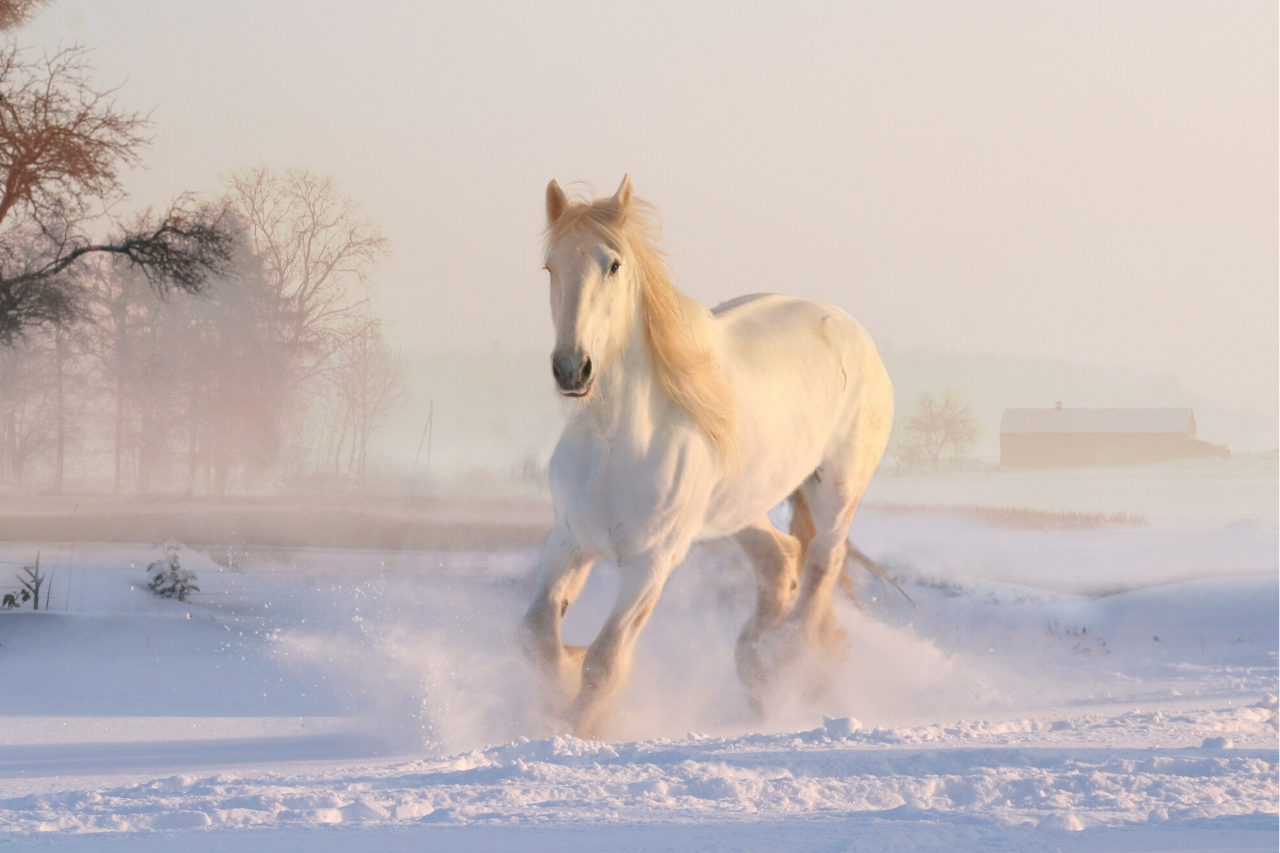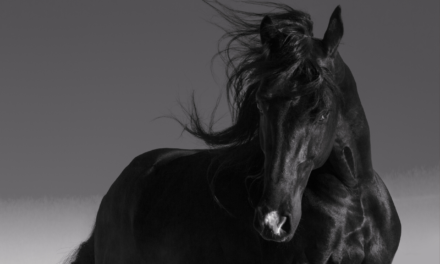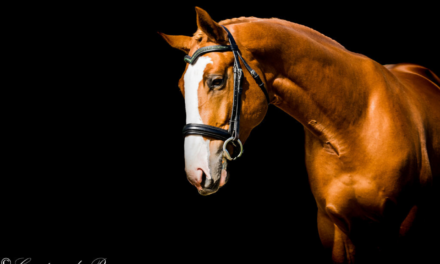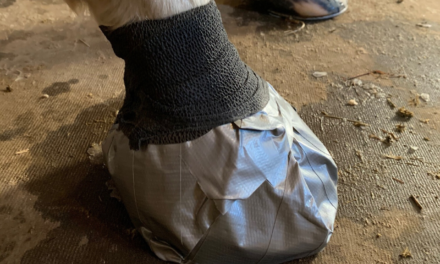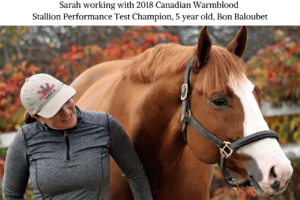We may earn money or products from the companies mentioned in this post. For more information please check out our disclosure page
Horses have basic needs, food, water, and shelter no matter what the weather is. In the winter for many climates, caring for your horse can come with some extra challenges, some preparation before the bad weather hits, and a little extra effort through the cold months.
1. PREPARATION IS KEY!
Before the bad weather hits make sure you have everything you need inspected, repaired, and ready to use.
Ensure your electric cords are safety checked and ready to be connected to your electric water heaters. EXTENSION CORDS SHOULD BE SUITABLE FOR OUTSIDE USE.



Connect your in-tub bottom water heaters if you are using a large water tub
Make sure all your submersible electrical water heaters are in good shape and safe to use, replace if necessary
Purchase a supply of free-choice salt – I will discuss the benefits below
If you are using slow feeder nets make sure they are in good shape and ready to use
If you use a round bale feeder ensure all old and mouldy hay is removed from the inside
If you are using blankets have them clean, any repairs done ahead of time and ready to use.
Repair fencing if needed. There is nothing worse than having to do it in sub zero temperatures or pouring rain.
Purchase ‘salted’ or ‘pickled’ sand for ice footing so your horse can manoever in and out of paddocks, stables, and paths.
2. GET EVERYTHING SET UP
Install your submersible water heaters in any big water tubs. Make sure extension cords are connected safely and out of the horses’ way, This can be a tricky one as horses get into everything.
I run my water containers by an outside post and make sure the electric cord is run to a post and attached so the horses can play with it and end up putting it in the water.
Ideally it is best to have an electrical outlet that goes into the ground by the paddock so you can plug the heater cord directly into it.
However, few of us have access to this luxury so making sure your cords are safely connected.
If your horses have a shelter make sure all manure is removed and the footing is level
HOW TO CARE FOR YOUR HORSE DURING THE WINTER MONTHS
3. WATER IS ESSENTIAL!
So many people I know put their horses out during the day without access to water thinking snow will substitute.
Water is the most important part of your horses diet and without regular access, your horse will be at risk for impaction colic.
Impaction colic is one of the most common call outs for vets in our area during the winter months. Why? Lack of water.
In super cold weather, water temperatures get colder and horses naturally want to drink less water which is a concern for their health.
Outside water heaters help this while your horse is outside. If your horses seems to be drinking less when it is inside try using heated buckets or put insulators around buckets.
Also offer them warmer water to drink as often as possible.
Monitor their water intake as closely as you can. It is important to know how much water your horse is drinking and take action to encourage drinking if you are concerned.
Add free-choice salt or put salt in their grain to encourage your horse to drink more often.
4. FEEDING GRAIN AND GOOD QUALITY HAY TO KEEP THEM WARM
Feeding your horse provides them with fuel and energy which keeps them warm.
How much should you feed?
There is no correct answer here. To decide on how to handle your horses feed program you will have to consider your horses’s age, the amount of work it is doing, its metabolism (is it an easy, or a hard keeper?), are they blanketed outside, and how they handle the cold weather.
This will require constant daily monitoring during the winter months. Keep an eye on your horses condition. Make sure ribs and hips are not starting to protrude.
If you have a lot of snow or rain in the winter, horses’ tend to want to move around less when they are outside.
Having access to hay 24/7 is will also relieve boredom, not to mention the benefits to their gastric health. We feed round bales to horses that need to keep the weight on during the winter months.
If you have a horse that is susceptible to weight gain and feeding round bales is not a suitable option, you should still increase their access to hay a little for the winter months.
Slow feeder nets are also a great option and come in round bale and square bale feeding options.
I grain our horses Hoffman’s Horse Feed twice a day. The amounts and types of grain we feed in their program is also dependent on their metabolism, amount of work, and how they are reacting to the cold weather.
If you are working your horse you may need to give your horse grain. The key is little and often, so don’t forget to split it into two to three feeds a day.
We also feed warm soaked alfalfa cubes at night check to horses that need a little extra.
Hoffman’s is my personal favorite for horse grain, I have used it for 20 years! Wherever I go with my horses people ask what I feed them because they stand out with conditioning and shine.
You can read more on my Hoffman’s Feed blog. I LOVE IT!
5. THEY NEED SOME KIND OF SHELTER!
Most horses’ that develop a healthy full winter coat can withstand winter conditions although they should have access to some shelter even if it is natural such as trees, hedges, or bushes.
There can be some bitter winds and storms. Horses’ will choose to back up to natural shelter and turn their hind ends towards the elements in order to protect themselves.
The rules change when you have a senior horse, a hard keeper, extreme weather conditions, or if you clip your horse.
We have all three options of these horses to consider in our winter program!
We have all them on the same program, they are blanketed, have outdoor turn out for reasonable weather days, and they are stabled at night, and in extreme weather conditions.
If you don’t have access to indoor stabling make sure they are blanketed and they should have a three sided shelter that is large enough for all of the horses to seek refuge from the elements.
6. TO BLANKET OR NOT TO BLANKET – THAT IS THE QUESTION!
Some basic guidelines:
The healthy horse with a long winter coat – it is better not to blanket
Sometimes blanketing can do more harm than good. Horses have their own natural insulation and are generally built to withstand harsh weather conditions.
The healthy horse with a thin winter coat – I generally blanket as they will feel the cold.
The clipped horse – these are clipped because they are in constant work and I have a wardrobe of blankets!
Blanket appropriately and make sure they are a good fit. Here are some blanket suggestions and uses for your clipped horse:
Heavier waterproof winter blanket – used for turn out and should have a removable neck piece. I have a 400 gram fill for my full body clipped stallion (I love Premier Equine blankets – great quality and a good price)
Stable blanket – use a thicker weight in a barn that isn’t heated.
Medium to light weight waterproof blanket – for the less extreme weather days. Remember not every day is freezing in the winter time, but it is cold enough that your clipped horse should have a blanket.
Another option with having this one and the stable blanket is you can eliminate the heavy winter blanket and layer.
So when you turn your horse outside the stable blanket can stay on and you throw the medium to light weight waterproof blanket over the top for turn out on the colder days.
Cooler that covers the neck also – use after exercise until the horse is dry
Quarter sheet – to cover hind quarters while riding to stop the horse getting chilled.
I use a Back On Track quarter sheet will winter riding as its designed to warm the horses hind end with the ceramic fill.
The senior horse – I tend to blanket the senior horse with the same process I blanket the clipped horse. A senior horse tends to lose its ability to keep itself warm the same way as it used to.
The hard keeper horse – again blanket similarly to the clipped horse. A hard keeper and a senior horse will use more energy and fuel to keep itself warm which can cause weight loss, so it is important to help them keep warm.
Some final suggestions with blanketing:
Layering is a great option
Invest in good quality blankets – you will benefit in the long run
Check blankets regularly – horses can do the strangest things with them!
Be prepared to make a blanket change depending on whether your horse is sweating or shivering.
7. AIR QUALITY IN YOUR BARN
During the winter months we need to keep the cold out to stop water buckets freezing and help to keep our horses’ at a suitable temperature.
Although this has its’ advantages, it can also come with its own set of problems that will need to be addressed
Not enough air flow can cause respiratory problems and allergies in horses’.
Keep the barn and stables as clean as possible. Urine soaked stalls are a huge issue so clean stalls are a must.
Keep the dust down! Sprinkle water when sweeping will help keep the dust down and save your horses lungs.
Use proper ventilation when you can, open doors and windows when outside weather temperatures allow.
If you can’t breath clean air neither can your horse so try to make changes that will help.
Here is an overview of winter horse care
1. Prepare for winter by making sure you have everything you need.
2. Set up your equipment, heated water containers, get blankets out.
3. Ensure they have access to water at all times
4. Make sure you have a suitable feed program for your horse
5. A horse should be able to suitable shelter
6. Blanket for the occasion
7. Monitor barn air flow
admin
Latest posts by admin (see all)
- A Horse For All Reasons – Guest Blog by Lucy from Horse Factbook - April 8, 2020
- How To Deal With A Spooky Horse Trail Riding - March 31, 2020
- Our Top 20 Amazon Equestrian Products - January 30, 2020

